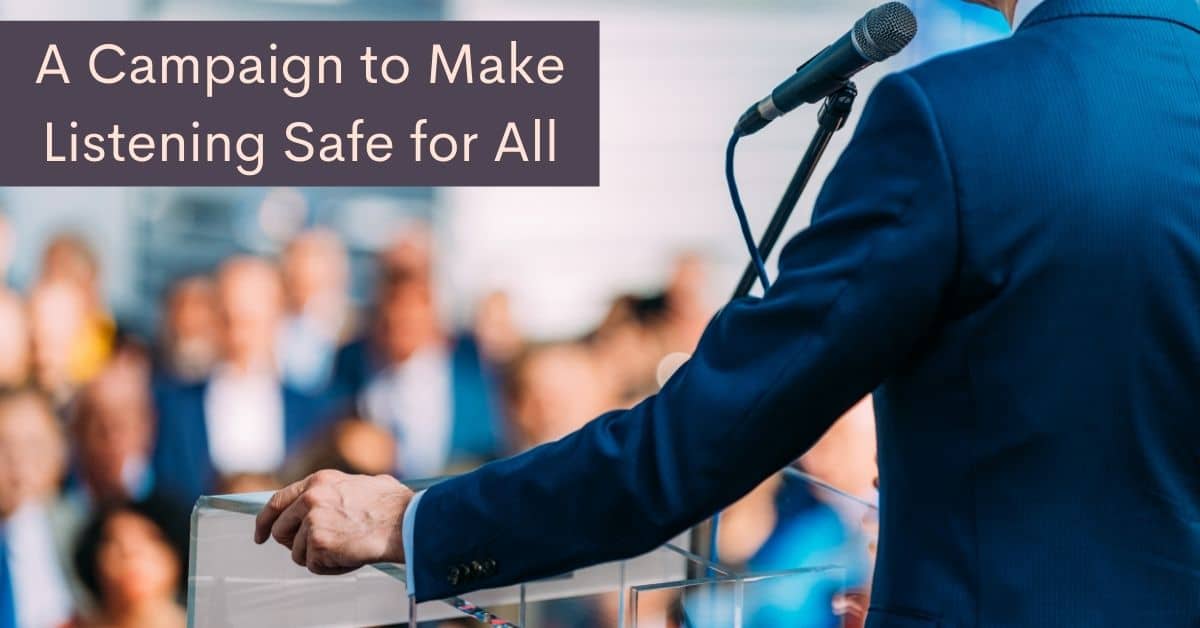Sound is all around us, helping us navigate and enjoy the world. However too much sound can become noise, which can damage our hearing. The World Health Organization recently classified noise as a significant risk to people’s health worldwide.
WHO reports that “1.1 billion youth worldwide are at risk of hearing loss because of unsafe listening practices.” With these staggering numbers for a younger generation, WHO has started a campaign to protect the ears of people of all ages. This campaign called ‘Make Listening Safe Workgroup’ is dedicated to building a world where no one’s hearing is put in danger due to improper listening.
Noise induced hearing loss
Noise induced hearing loss occurs when sound reaches a high enough level to damage the fragile cells and hairs of the inner ear, dedicated to sending audio information to the brain for processing.
This type of damage is irreversible as researchers continue to struggle to find ways to heal and regrow cells used for hearing. Sound is measured in decibels and this allows us to understand when our hearing is put at risk. Any sound over 85 decibels can begin to damage our hearing permanently.
It’s not only the level of noise that can damage the ears but the amount of time exposed. For instance low level of dangerous sound exposure can cause serious damage over many years but as the decibel level rises the amount of time to do the same damage becomes much faster. A blast from fire works at close range can reach anywhere from 150-175 decibels. This can cause damage to your hearing in a matter of seconds.
Safe listening practice
While noise induced hearing loss can’t always be avoided due to unpredictable circumstances, most instances can be predicted. WHO’s campaign fights to make sure there are less and less chances to injure hearing. While some of these measures are on a policy level much of the campaign focuses on education.
When people can understand when their hearing is at risk and how to prevent it the amount of hearing damage to the world population can be greatly reduced. Know the decibel levels of the places you frequent most. This includes your work, your home, your commute and the activities you love to do regularly.
You can measure the ambient sound of a room and know the decibel level using a Smartphone app. If the decibel level exceeds 85db then your hearing is at risk and hearing protection should be worn at all times. Earplugs and protective headphones can reduce decibel levels anywhere from 15-30 db and can make a huge difference in your hearing health.
Safe listening with personal audio systems
One of the greatest risks to people’s hearing are one most of us choose to use these days. Personal listening devices such as mp3 players, ipods and Smartphones allow us to listen to music and radio for hours, sent directly to our ear canal via earbuds and headphones.
Personal listening devices pose one of the greatest risk to our hearing by sending decibel levels that easily reach 100 db for hours into our ear canal causing permanent hearing damage. The ‘Make Listening Safe Working Group’ proposes changes in how industries manufacture personal listening devices.
WHO reports that “nearly half of all teenagers and young adults (12-35 years old) in middle- and high-income countries are exposed to unsafe levels of sound from the use of personal audio devices.” The work group seeks to limit decibel level of personal listening devices to less than 90 decibels for 80 hours a week. After the limit has been reached new devices would limit listening ability, potentially saving the hearing of millions of ears worldwide.
Safe listening with personal listening devices
While these developments are on the horizon, it is up to us to set our own listening limits and protect our hearing. A good rule of thumb is to never turn your headphones or earbuds up past 60% of their total volume potential. It is also a good idea to self regulate the amount of time spent listening to headphones, taking listening breaks every hour.
Addressing hearing loss
If you suspect that your hearing abilities have changed, addressing hearing loss early can make a world of difference in how you communicate and navigate your life. Make sure to set up a hearing test to understand if you deal with hearing loss and to what extent. The campaign to protect hearing begins with you.

